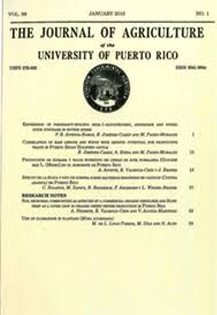Abstract
The first documented observation on biological control of insects in Puerto Rico was made by botanist Andres Pedro Ledrú who arrived on the island in 1797 with a commission of French scientists. Much later (1880- 1887), Johannes Gundlach classified braconid wasps of the genus Conura. In 1895, Fernando López-Tuero published a treatise on sugarcane and the beneficial effects of Apanteles sp. and Euplectrus sp., two natural enemies of the sugarcane borer Diatraea saccharalis F. Since then more than 75 natural enemies were introduced, some very effective like the toad Bufo marinus L. in controlling white grubs in sugarcane, and others partially effective like the coffee leafminer parasitoid, Mirax insularis Muesebeck. Also, natural enemies were exported from Puerto Rico to other countries as far away as Mauritania. However, with the advent of chlorinated insecticides derived from DDT, in the early 1950s, the work on biocontrol declined dramatically, and not until the mid-1980s was biological control again considered a remedy to the problem of pests. In Puerto Rico, research was focused more on recognizing the endemic fauna of natural enemies and the introduction of parasitoids/predators. This paper presents a historical review and discussion of trends and approaches to the biological control of pests from its beginnings to the present.Downloads
Download data is not yet available.

